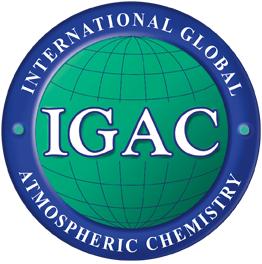 |
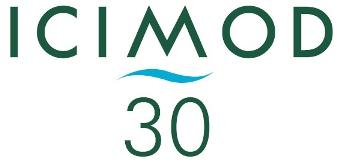 |
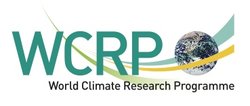 |
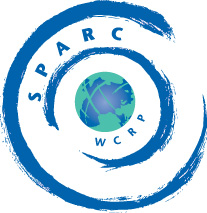 |
 |
 |
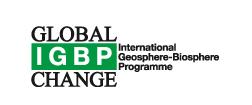 |
|||
Workshop on Atmospheric Composition and the Asian Summer Monsoon (ACAM)
|
Workshop Dates: June 9-12, 2013 Location: Kathmandu, Nepal (Local sponsor: the International Centre for Integrated Mountain Development, ICIMOD) Abstract Submission Deadline: March 15, 2013 Registration Deadline: March 29 |
Background
The Asian summer monsoon (ASM) system has a significant role in chemistry-climate interactions. To date, research focused on the interaction between atmospheric composition and the Asian summer monsoon has largely capitalized on using satellite observations and global models. However, how source regions and impact levels are coupled with topography and dynamics/meteorology is not well understood. Field-based study of this system, whether from the ground or by aircraft, remains challenging and improving collaborative efforts throughout the international community is essential. The core objective of this workshop is to facilitate the development of these collaborations across a broad range of scientific research related to the ASM including the coupling of ASM dynamics with regional emissions, air quality, aerosol and clouds, the impact of convection on tropospheric chemistry and the role of the upper level anticyclone in the transport of water vapor and pollution into stratosphere.
Scientific scope of the workshop
1. Emissions and Air Quality in the Asian Monsoon Region
Air pollution is a significant problem in the Asian Monsoon Region. The high levels of air pollutants in the atmosphere, and when deposited on snow and ice surfaces, also can impact meteorology and climate in the region, and alter the amount and quality of solar radiation reaching the surface, with impacts on agriculture. The sources of pollutants in the region are highly varied, including windblown soils from the arid and semiarid regions, biomass emissions from forest, agriculture, garbage burning, biofuel emissions from cooking, and emissions from fossil fuel use in the power, transport and industrial sectors. The emission estimates in total and by source/fuel types, as well as their geographic distributions are highly uncertain and changing rapidly. Further studies are needed to improve emission estimates, and to study the transport and fate of emissions. Regional emission information is not only important to the surface air quality but also for the troposphere chemistry and UTLS composition, once emission is coupled to monsoon convection. Understanding the three dimensional distribution of pollutants in the Asian Monsoon Region is necessary to better quantify how pollutants are transported vertically and over long distances. The aging of the air masses in terms of changes in composition and optical properties also need to be better understood. Such improved understanding and information will be of great use in developing policies that address air quality and climate change together.
Presentations and discussion under this theme will focus on current understanding of emissions, regional characteristics of air pollution, major gaps in linking emissions to air quality to weather/climate feedbacks, and strategies for future work to address these issues.
2. Aerosols, Clouds, and the Asian Monsoon
Across big parts of the Asian Monsoon Region the dry season is characterized by heavy aerosol loadings that often have a strong absorbing component. This can influence atmospheric stability through local heating of upper layers and cooling of the air underneath. The local heating can influence cloud persistence by enhancing evaporation. Increased aerosol loads can also affect clouds by increasing cloud droplet numbers and decreasing cloud droplet size, leading to brighter clouds and less precipitation. These effects are not only dependent on aerosol number but also depend on aerosol composition, hygroscopicity and radiative properties. Integrating this information together to understand impacts on clouds, precipitation, and local/regional climate is a daunting task that requires in situ measurements of composition and the local radiation field. Satellites are also critical to extrapolating localized in situ information to the larger regional scale.
Presentations and discussion under this theme will focus on current understanding of aerosol sources, transport, distribution, and properties across the Asian Monsoon Region; evidence for their impact on clouds; and strategies for collecting future observations that can help quantify these impacts and improve the ability to represent these impact in models.
3. Asian Monsoon Convection and Chemistry
From a global perspective, the greatest potential for convective impacts on atmospheric chemistry exists over the Asian Monsoon Region. This is where dense population and human activity provide the strongest source of anthropogenic emissions available for transport within tropical deep convective systems. Convective influences on atmospheric chemistry are unique in that the short timescales for vertical transport provide the only mechanism for short-lived, reactive species emitted at the surface to reach the upper atmosphere. With the additional influence of lightning, convective storms are also the dominant influence on the reactive nitrogen budget of the upper troposphere.
Satellite observations of pollution tracers such as CO provide strong evidence for the impact of convective mixing associated with the Asian Monsoon and models have been used to reproduce and examine the associated impacts. Observations are needed, however, to document the detailed compositional impacts of convection that are linked to many factors. These include the relative distributions of emissions and convective activity, the altitude structure of convective outflow, the solubility of various transported chemical species, the persistence and extent of anvil cirrus, and the downwind chemical evolution of convective outflow.
Presentations and discussion under this theme will focus on current understanding, open questions, and strategies for future work to investigate the chemical impacts of Asian Monsoon convection.
4. UT/LS Response to the Asian Monsoon
The upper troposphere and lower stratosphere (UTLS) is the region where water vapor, ozone, aerosols and clouds have an enhanced impact on climate. The Asian summer monsoon circulation contains a strong anti-cyclonic vortex in the UTLS, spanning Asia to the Middle East, referred to as the Asian monsoon anticyclone (AMA). The AMA has been recognized as a significant transport pathway for water vapor and pollutant to enter the stratosphere: Enhanced levels of pollution in the UTLS are clearly seen in satellite observations showing the AMA as the most prominent feature during the boreal summer. These observations point to the region’s unique meteorology and sensitivity to rapidly changing emissions of gas phase and aerosol pollutants in Asia. The satellite observations have revealed an aerosol layer near the level of the tropopause. The key scientific questions include, but not limited to the following areas:
- UTLS chemical response associated with the AMA: what is the impact of the uplift of O3 precursors and very short lifetime species in the AMA on the UTLS O3 budget? What is the structure of chemical composition and aerosol in the UTLS in smaller spatial and temporal scales than that provided by the satellite observations? How does the aerosol-cirrus cloud interaction affect the water vapor budget in the UTLS?
- Transport mechanisms: How is the AMA transport related to the monsoon dynamics? What controls the efficiency of this transport pathway? What drives the lifting and transport from the convective outflow to the center of the anticyclone? What controls the water vapor transport into the stratosphere in this region?
- Major source regions: What are the primary origins of the air masses in the AMA? What fraction of boundary layer pollutant is lifted to the UTLS? Entering the stratosphere?
- Broader impact: How well is the transport pathway represented in the chemistry-climate models? How do we further quantity the role of AMA in chemistry-climate interaction?
Workshop Format
The workshop is planned to have keynote speakers, contributed oral and poster presentations, themed discussions, and discussions leading to a summary of future activities. A number of invited speakers are committed to provide overviews of the identified topics. Contributed presentations on in-situ and remote sensing measurements, analyses and modeling and are invited through the abstract submission. We also invite presentations on relevant measurement capability, ongoing activities and future plans. Discussions in meeting, during the poster session and extended break time are all important part of the workshop.
Potential Outcome of the Workshop
- Better identification of scientific challenges; share information of on-going effort in measurements, modeling activities and capabilities; identification of major gaps in research.
- Networking among researchers from Asian Monsoon regional countries and formation of new partnerships and collaborative efforts between research groups from developed countries and developing countries.
- Contribution of a report to IGAC/iLEAPS/SPARC/ICIMOD newsletters and several scientific feature articles with highlights of the workshop presentation/discussion.
- Identification of interest in writing a whitepaper to summarize the state of ACAM research and key outstanding issues.
If you are interested in further information, please sign up for the mailing list by following the instructions on this page: http://mailman.acd.ucar.edu/mailman/listinfo/acam
Scoping Paper